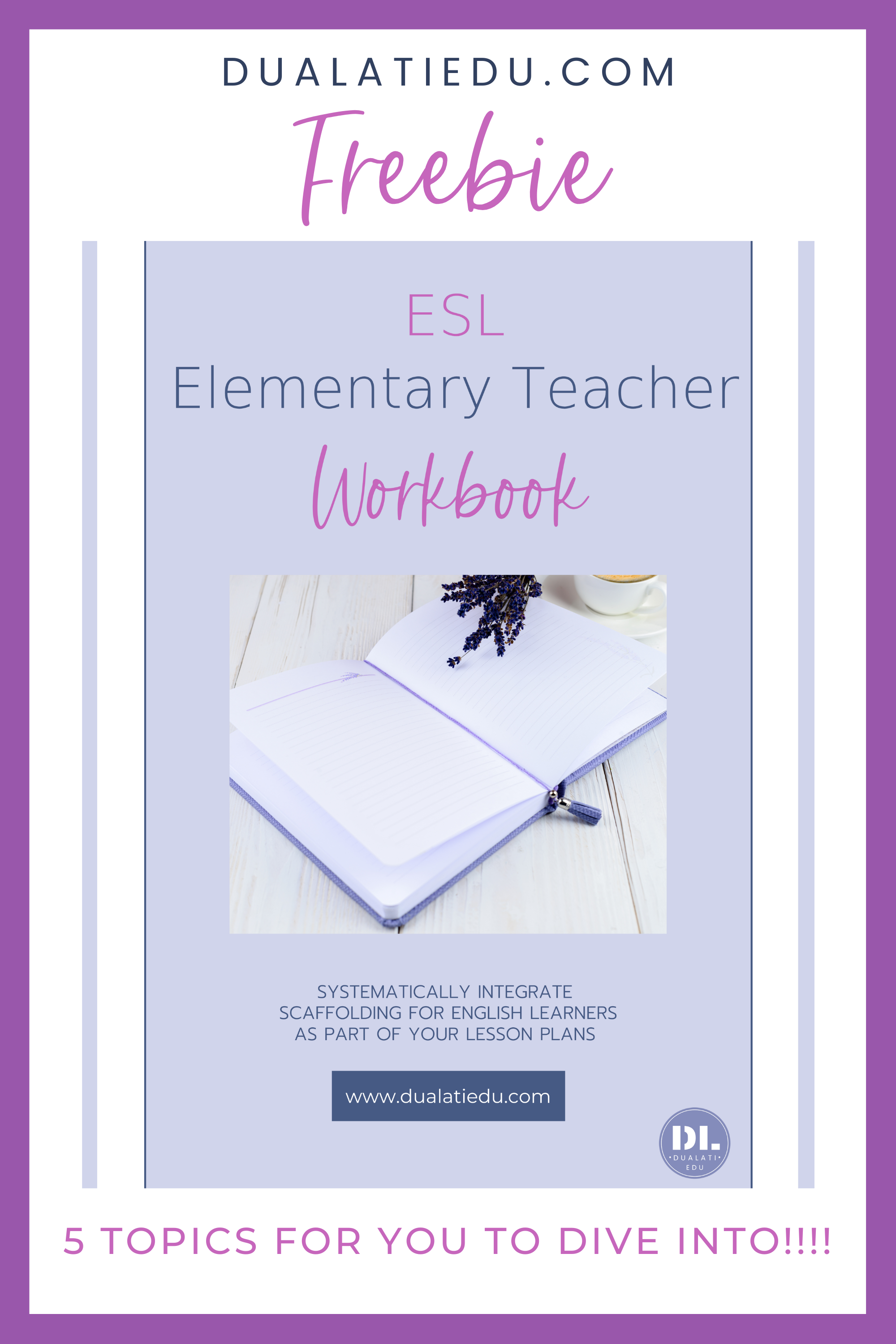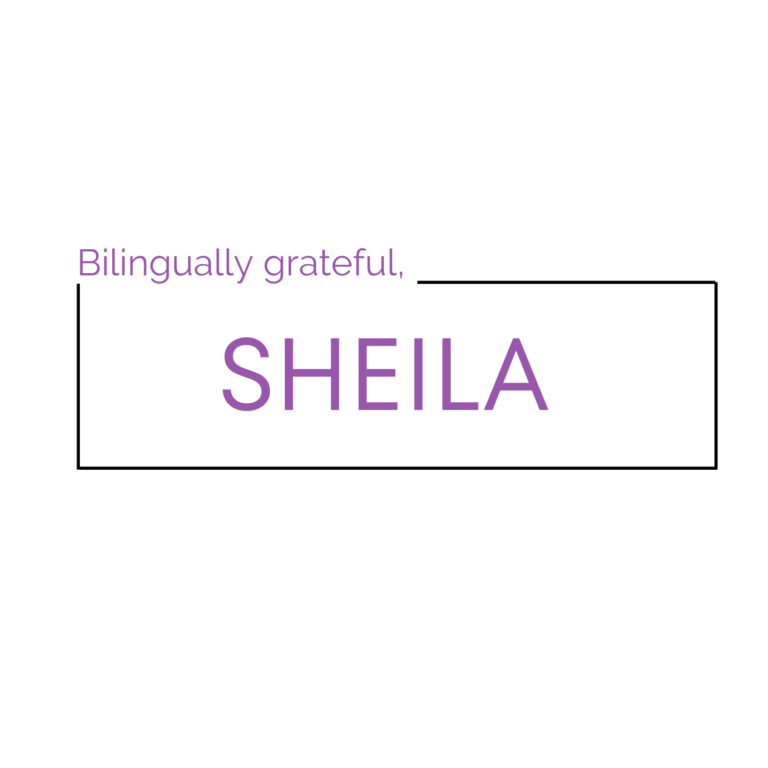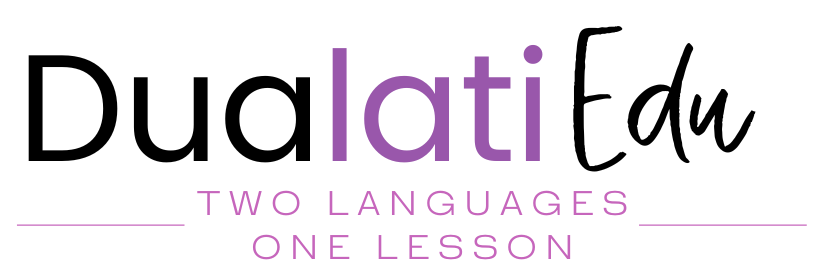We know about content objectives, Any teacher can tell you that a content objective is what guides our daily instruction. However, what are language objectives?
Teachers explicitly state the content objectives in their lesson plans. They also place them on the board in kid-friendly language. The reason behind this is so that all stakeholders (including administrators) have a clear learning goal.
However, for English learners to access and be successful at mastering content objectives, they need to understand language.
So, how do we actively teach language structure and proficiency while teaching content? By creating language objectives we can keep language as the tool or vehicle in which students will receive and demonstrate content knowledge.
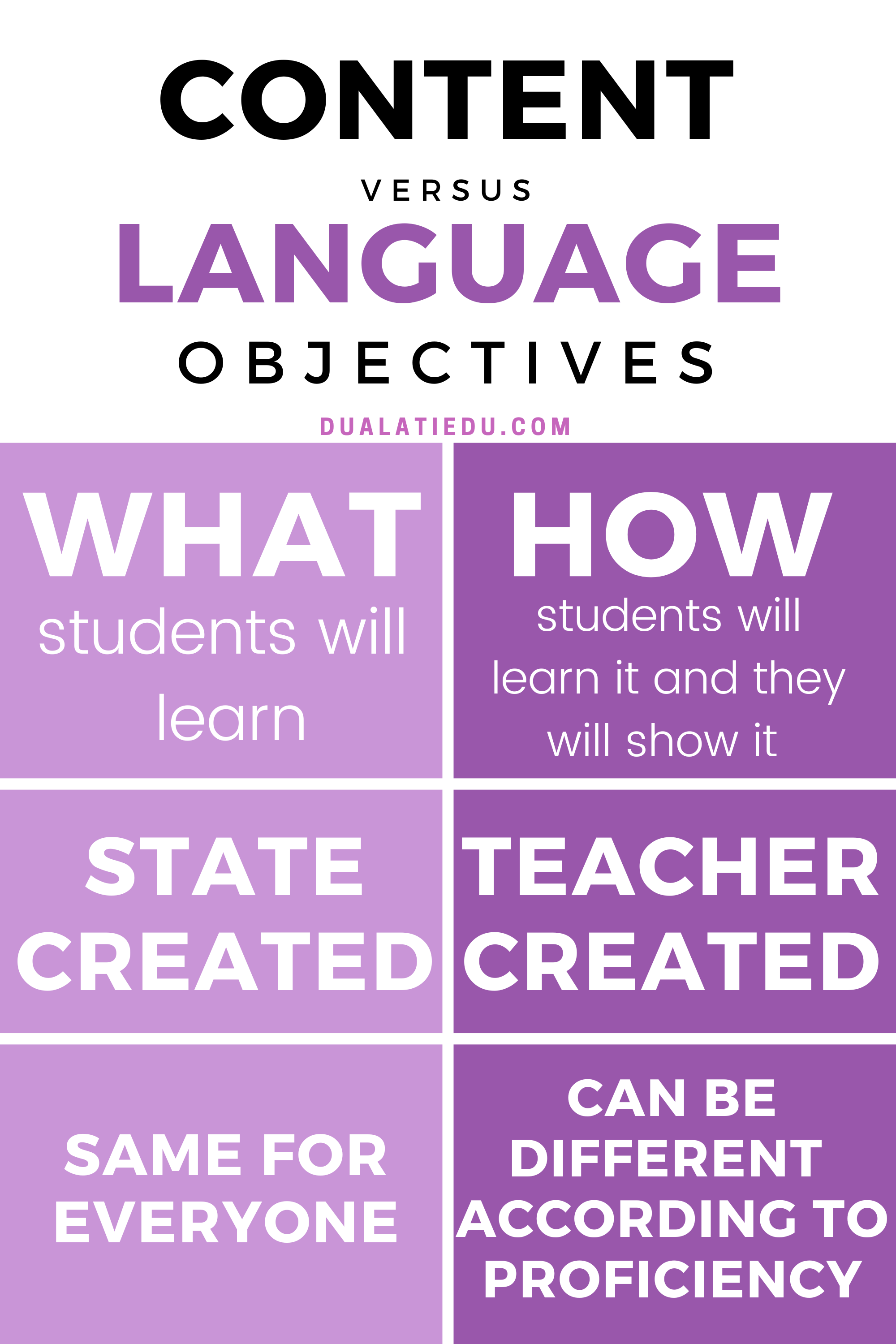

BICS AND CALP
You hear your student speaking in English and think they won’t need any scaffolding to learn academic content. However, if they are learning English, they may be at the stage where they manage Basic Interpersonal Communication Skills (BICS). However, they may not necessarily master the academic language (Cognitive Academic Language Proficiency- CALP) needed in a classroom setting.
Professor Jim Cummins says that students reach academic language proficiency around 5-7 years after entering a second-language academic classroom.
If you want more information about BICS and CALP, click here.


At the beginning of the year, make sure you get to know your class by looking for language proficiency levels to provide scaffolds, if needed.
Language objectives
There are four language skills domains – listening, speaking, reading and writing. ESL teachers plan and incorporate scaffolds that best serve students’ language proficiency levels.
However, language must be explicitly taught while teaching content objectives.
What are language objectives?
Language objectives address how students will learn the content objectives (receptive language skills – listening and reading). They also address how students will show or demonstrate what they have learned (expressive language skills – speaking and writing).
To create a language objective that best fits the content objective of the day, consider the following:
1. Language Function – Action verbs
First, look at action verbs in each of the four language domains. Select which to use depending on the content objective and students’ language proficiency level.
Here are a few examples of action verbs in each language domain.
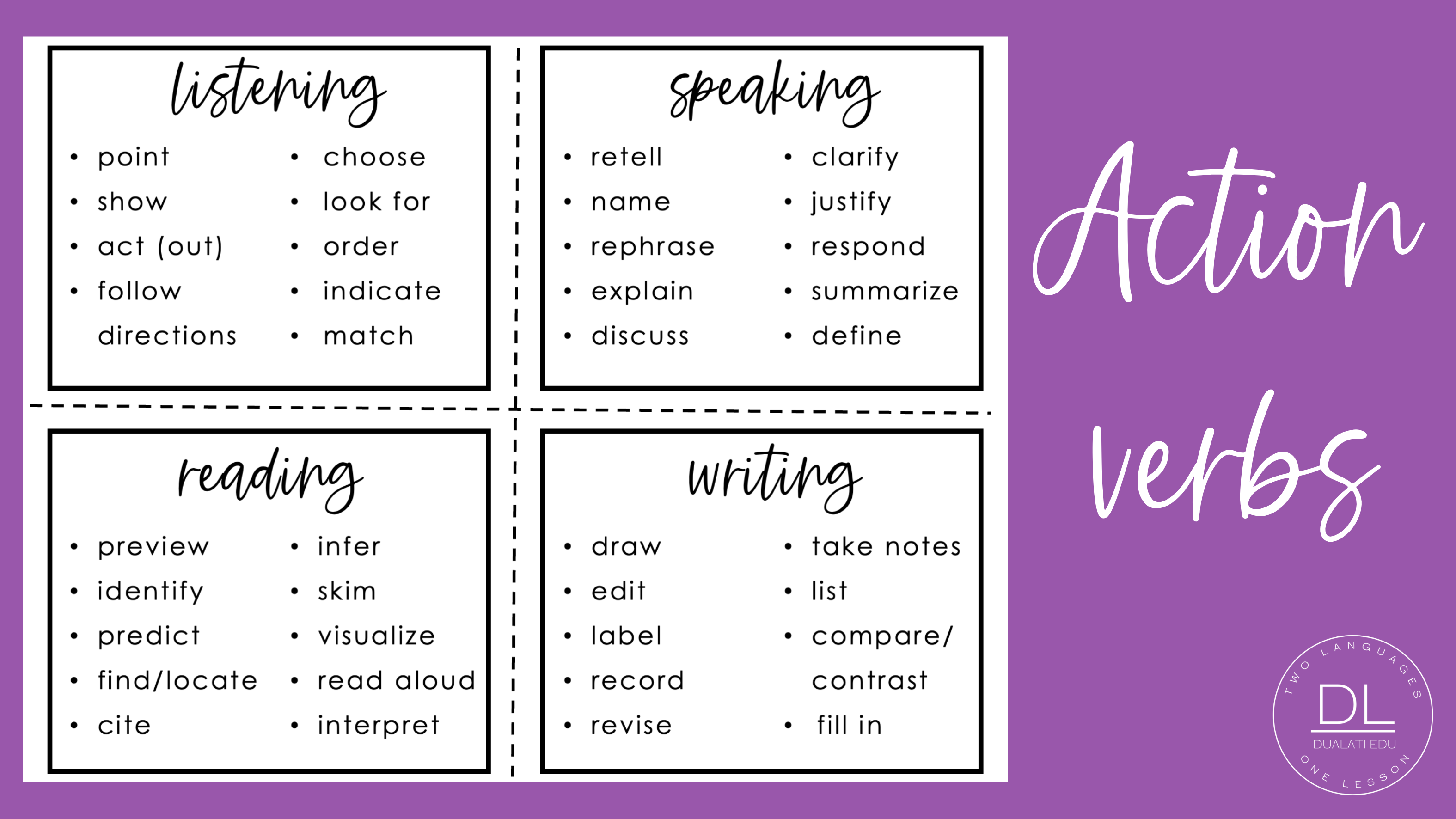
2. Vocabulary
Subject-specific and general cross-curricular academic vocabulary are critical to mastering content objectives.
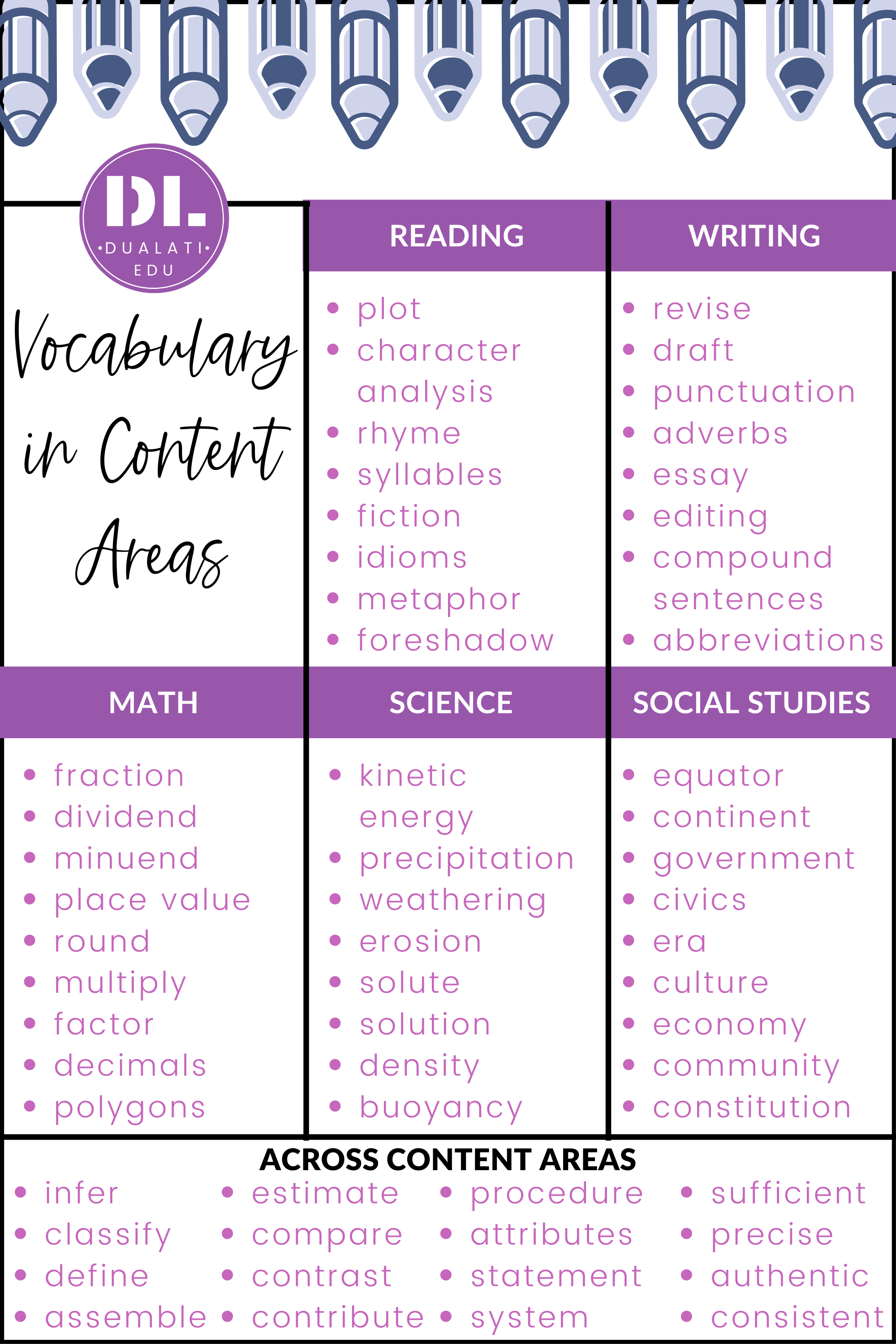
3. Sentence structure – Syntax
Teachers can reinforce how meaning is conveyed when words are organized in a certain way in a sentence. Since context is essential in making input comprehensible, students must notice and practice building sentences within different subject areas.
Now that we have a deeper understanding of the components of language instruction, let’s put all the pieces together.
Language Objective Sentence Frame
Dr. Kate Kinsella shares two sentence frames that we can use to create our language objectives using the three components we discussed before.
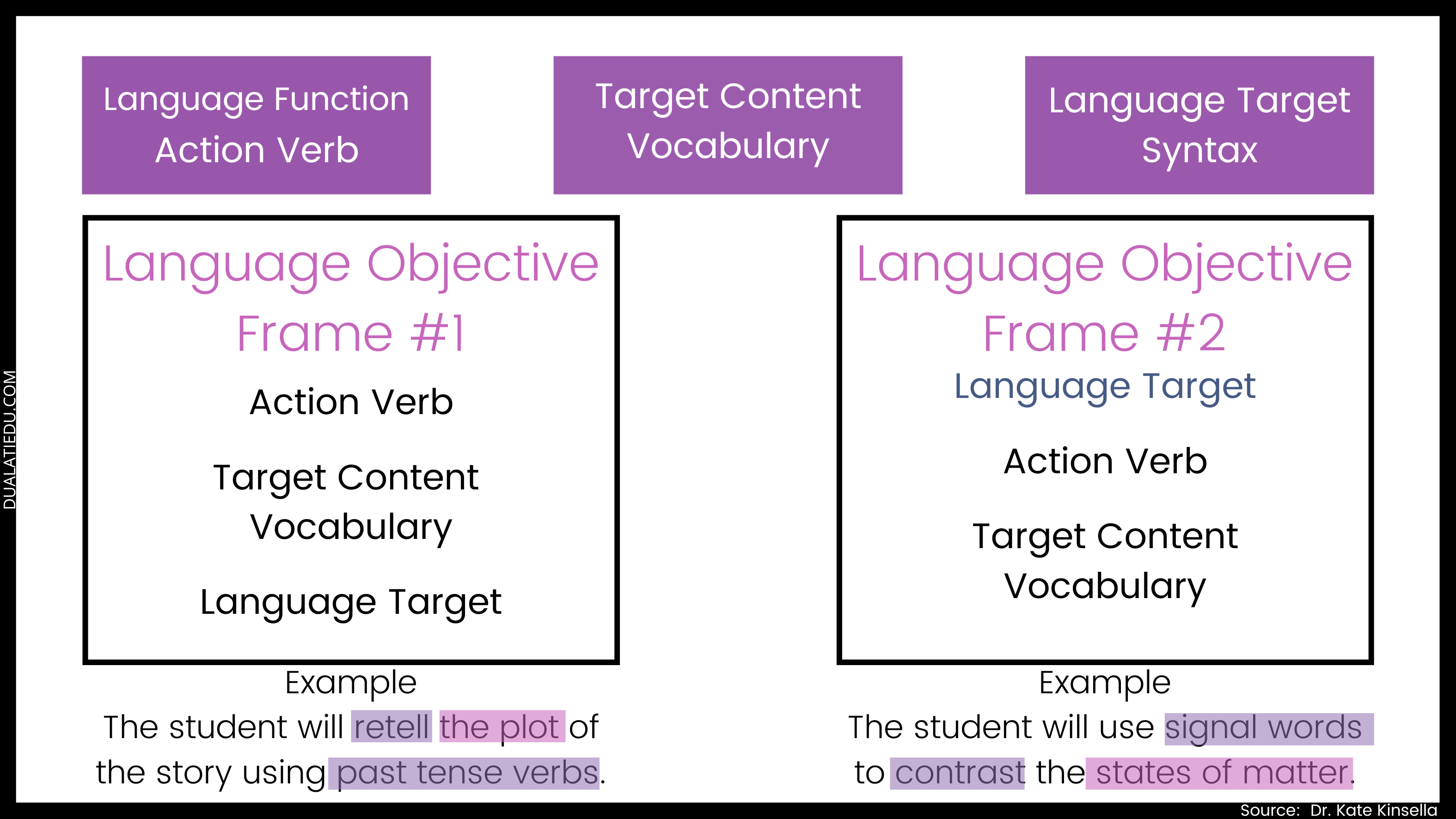
As an ESL teacher, you may need to prepare mini-lessons in order for students to be successful with the language target portion of the sentence frame above.
Looking at the example provided, you may need information on how well your ESL students master the past tense.
A quick 5-10 minute mini-lesson, preview in centers, and/or written scaffolds such as rules or a past tense verb list are appropriate in this case.
Also, use these in cross-curricular content (Social Studies is a great example for the use of past tense verbs) as the need to use syntax/grammar rules comes up naturally. Think about an adjectives mini-lesson in describing shapes in a Geometry lesson.
Reach out to your campus coordinator or other ESL teachers on campus/district to share scaffolding/ mini-lesson ideas that can be incorporated in cross-curricular content.
For more information on ways ESL teachers can help their students be successful, download this FREE guide!
